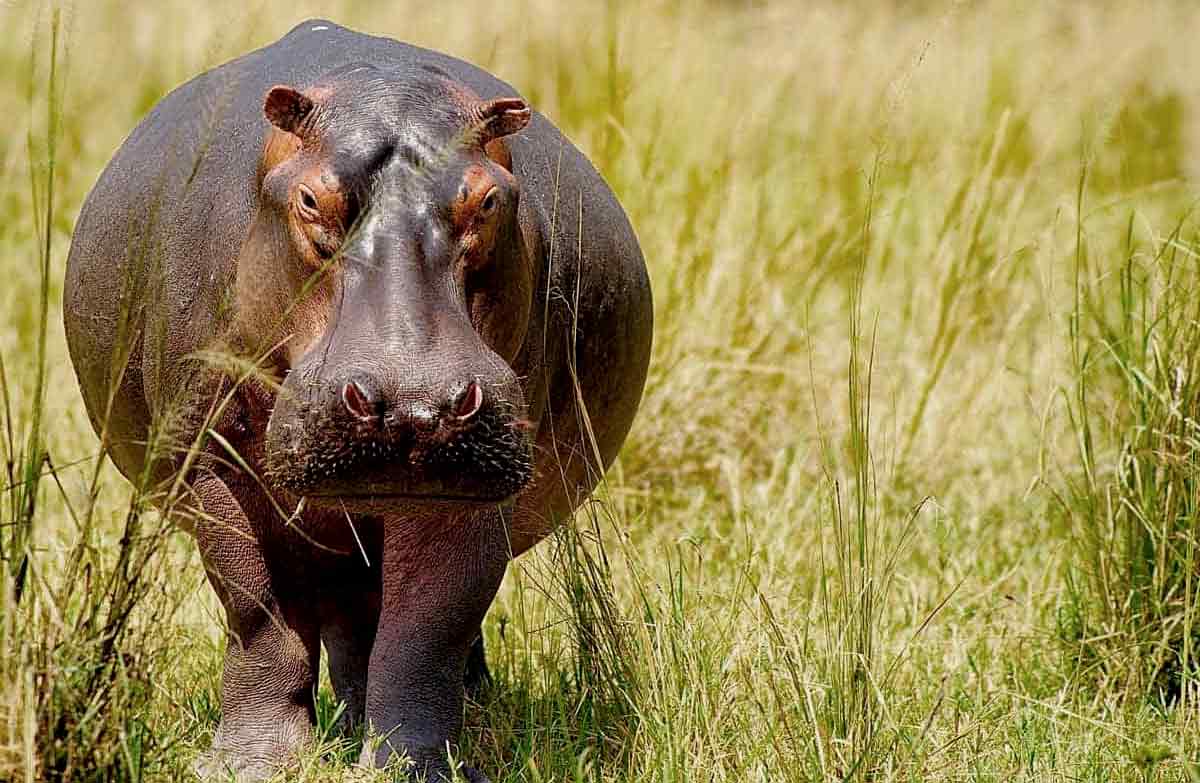What Do Hippos Look Like: 19 Fun Facts About Appearance
The hippopotamus ranked as the third largest terrestrial mammal after elephants and white rhinoceros, possesses a distinctive anatomy that reflects its evolutionary adaptations for life in aquatic environments. The creature’s remarkable four webbed fingers extend strategically, ensuring an equitable distribution of its considerable weight. This adaptation is crucial, providing the hippo with substantial ground support. The exterior of its massive body is enveloped in a thick, virtually hairless, gray skin, offering a robust defense against the elements.
What Do Hippos Look Like? 19 Fun Facts About Appearance
Intriguingly, hippos lack both sweat and sebaceous glands, relying on water or mud for temperature regulation. A fascinating aspect of their physiology involves the secretion of a viscous red fluid, serving as a natural sunblock. This crimson substance not only shields the hippo’s skin but also raises questions about potential medicinal properties.
1. The Stature of the Hippo
The sheer size of the hippopotamus is awe-inspiring, with a body resembling a colossal barrel. In the hierarchy of ground-dwelling mammals, the hippo claims the prestigious position of the third-largest, surpassed only by the elephant and the white rhinoceros. This massive statue not only contributes to the hippo’s imposing presence but also underscores its significance in the intricate tapestry of wildlife.
2. Adaptations for Aquatic Vigilance
Observing a hippo reveals a unique arrangement of sensory features, with ears, eyes, and nose strategically positioned atop their heads. This peculiar arrangement is not merely a quirk of nature but a strategic adaptation for survival. In their semi-aquatic habitats, the elevated placement of these sensory organs allows hippos to maintain vigilance against potential predators, even when submerged. This remarkable trait emphasizes the constant interplay between adaptation and environmental challenges in the evolutionary journey of the hippopotamus.
3. The Curious Case of Hippo Sweat
Contrary to the common perception that hippos do not sweat, these colossal creatures indeed have a distinctive method of cooling down. While they lack the traditional sweat glands found in humans, hippos secrete a unique sweat that is thick and red in appearance. The peculiar composition of this sweat has led to its colloquial description as “sweating blood.” Though the reality is less macabre, this crimson secretion remains a captivating aspect of hippo biology, adding a layer of intrigue to their already enigmatic existence.
Other Recommended Reading
- Pregnant Hippopotamus – How long is a Hippo Pregnant for?
- Hip Hop Hippopotamus – Flight of the Conchords Song with Lyrics
- Hiphopopotamus Vs Rhymenoceros – Song with Lyrics
- Hippopotamus Lifespan – What does a Hippo do to Survive?
- Hippopotamus Aggressive – How Aggressive are Hippos?
- Why is a Hippopotamus Found with a Mouth Open?
- Is a Skinny Hippopotamus Possible?
- Hippopotamus Herbivore – Is Hippopotamus Vegetarian?
- I Want Hippopotamus for Christmas – Song History and Lyrics
- Baby Hippo – What do you Call a Baby Hippo?
- Interesting Facts about Hippos – What is Unique about Hippos?
- Hippo Eats Baby Hippo – Is it a Myth or Reality?
- Why do Hippos Have Big Teeth?
- Is the Hippopotamus Dangerous for Humans and Animals?
- Rhinoceros vs Hippopotamus – Can Rhinoceros and Hippopotamus Coexist?
- Hippopotamus Madagascar Movie – Hippo Name and Fame
- Hippo vs Crocodile – What Animal Can Beat a Hippo?
- Hippo Food Chain – Does a Hippo have a Natural Predator?
- What do Hippos Sound Like?
- Are Hippos Omnivores? Do Hippo Eat Meat?

